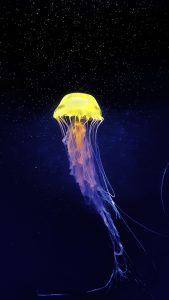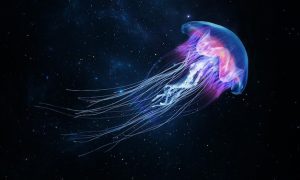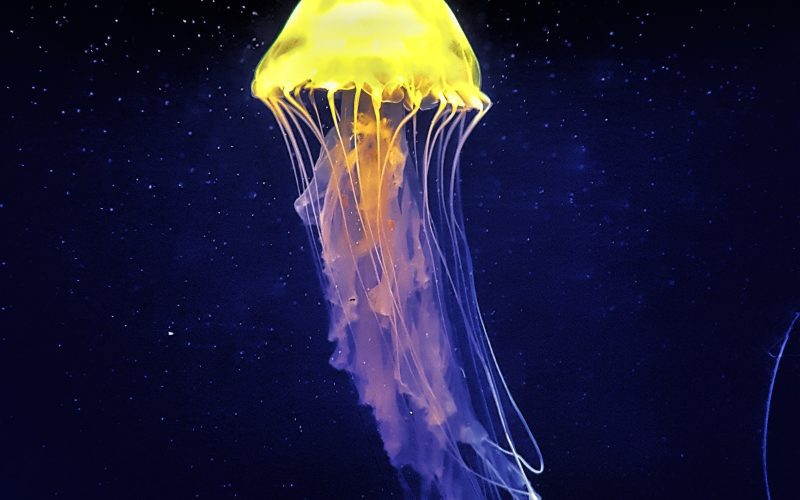Introduction: Meeting Our Guide
Welcome to the enigmatic world of jellyfish, a realm of captivating mysteries waiting to be unveiled. To guide us through this adventure, we introduce Dr. Emily Turner, a distinguished marine biologist with over two decades of experience in studying these intriguing creatures.
Dr. Turner’s passion for marine life has led her to explore the enigmatic world of jellyfish, and her extensive research has provided valuable insights into their biology, behavior, and ecological significance.
Jellyfish 101: A Fascinating Overview
Before we dive into the depths of jellyfish’s enigmatic world, let’s start with the basics. Jellyfish are marine invertebrates known for their mesmerizing, gelatinous appearance. Dr. Turner unravels their unique anatomy and life cycle.
Jellyfish have a simple body structure, with a bell-shaped top and trailing tentacles that contain stinging cells. Their life cycle involves several distinct stages, including polyps and medusae. Understanding these fundamentals is crucial to appreciating their role in marine ecosystems.

The Diverse Jellyfish Species
Jellyfish come in a remarkable variety of shapes, sizes, and colors. Dr. Turner takes us on a journey around the globe to discover the diverse species inhabiting our oceans.
From the elegant Moon Jellyfish found in coastal regions to the imposing Lion’s Mane Jellyfish with its trailing tentacles in cold waters, and the venomous Box Jellyfish dwelling in tropical oceans, each species has its own unique features and adaptations. Exploring this diversity is essential to understanding their ecological roles.

Jellyfish: Beyond the Sting
Jellyfish are often associated with their stinging tentacles, but there’s more to these creatures than meets the eye. Dr. Turner sheds light on their hidden abilities, including bioluminescence, the mesmerizing art of producing light.
Additionally, we explore jellyfish’s role as bioindicators for ocean health. Their sensitivity to environmental changes and pollution makes them invaluable for understanding the state of our oceans, beyond their stings.
Jellyfish’s Role in the Ecosystem
Intriguingly, jellyfish play a vital role in marine ecosystems. Dr. Turner unravels the complex web of interactions they have with other marine species, including predation, competition, and symbiosis.
Moreover, we delve into the impact of climate change on jellyfish populations. As ocean temperatures rise and ecosystems shift, understanding how jellyfish adapt and influence these changes is critical for ecological conservation.
Dr. Emily Turner’s Insights
Dr. Turner’s extensive research and expertise in the field of marine biology provide us with invaluable insights. Her work has been published in prestigious journals, and she frequently collaborates with marine conservation organizations to protect our oceans.
Her insights into jellyfish behavior, ecology, and conservation efforts are the backbone of our journey into their enigmatic world.

The Future of Jellyfish Research
As our understanding of jellyfish grows, so do the possibilities for their conservation and potential benefits for humanity. Dr. Turner discusses the future of jellyfish research and its implications for marine conservation.
From innovative tracking technologies to novel biotechnological applications, there is a bright future for the study of these enigmatic creatures.
Conclusion: A Deeper Appreciation
Our exploration of the enigmatic world of jellyfish has taken us from their basic anatomy to their crucial role in ocean ecosystems. Dr. Emily Turner’s guidance has been invaluable in unraveling the mysteries of these captivating creatures.
As we conclude our journey, it is our hope that you now have a deeper appreciation for jellyfish and the urgent need to protect their habitats. The enigmatic world of jellyfish is not just a mystery to be unraveled but a vital part of our global ecosystem that deserves our respect and conservation efforts.
The Enigmatic World of Jellyfish: Key Points Table
| Topic | Key Points |
|---|---|
| Jellyfish Anatomy and Life Cycle | – Description of jellyfish structure |
| – Explanation of their life cycle | |
| Diverse Jellyfish Species | – Overview of global jellyfish diversity |
| – Adaptations to various marine environments | |
| Jellyfish’s Unique Abilities | – Bioluminescence and other remarkable traits |
| – Role as bioindicators for ocean health | |
| Jellyfish’s Ecosystem Impact | – Interactions with other marine species |
| – Climate change effects on jellyfish | |
| Dr. Emily Turner’s Insights | – Expert insights from Dr. Turner’s research |
| Future of Jellyfish Research | – Potential benefits for marine conservation |
| – Upcoming developments in jellyfish studies |
Comparative Table: Jellyfish Species
| Species | Size (Diameter) | Habitat | Unique Features |
|---|---|---|---|
| Moon Jellyfish | 25-40 cm | Coastal regions | Translucent appearance |
| Lion’s Mane Jellyfish | Up to 2.5 meters | Cold waters | Long, trailing tentacles |
| Box Jellyfish | Up to 30 cm | Tropical oceans | Extremely venomous |
| Comb Jelly | Up to 15 cm | Open ocean | Bioluminescent, gelatinous body |
Introducing Dr. Emily Turner
Dr. Emily Turner is a leading marine biologist renowned for her pioneering research on jellyfish. With a Ph.D. in Marine Biology and over twenty years of fieldwork, she has dedicated her life to unraveling the mysteries of these captivating creatures. Her work has been published in prestigious journals, and she frequently collaborates with marine conservation organizations to protect our oceans.












